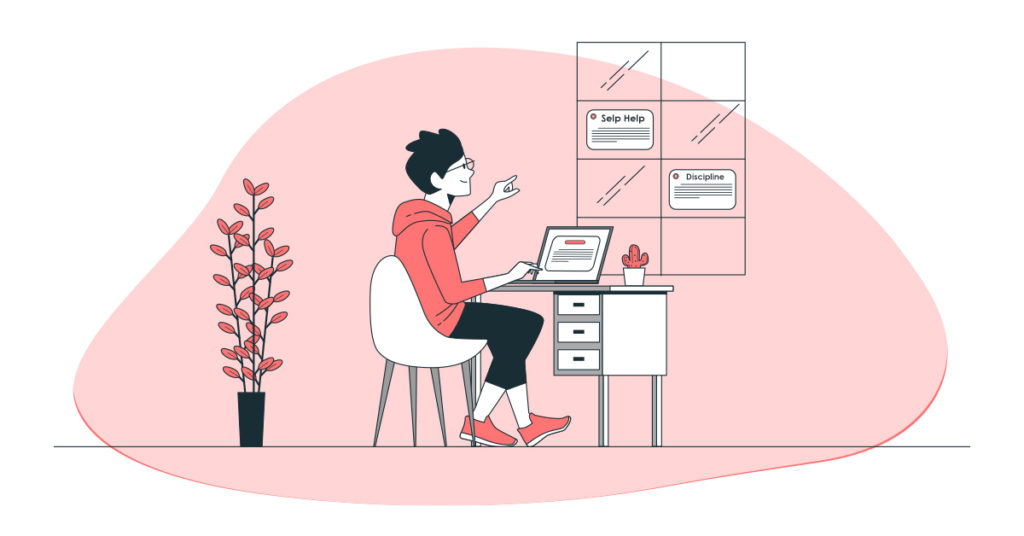How to Write a Self-Help Book Like a Pro

The genre of self-help has seen monumental growth in the past few decades. Self-help books have existed almost as long as the art of writing itself. They are said to have originated in ancient Egypt as informal guides to human behaviour. Although self-help books have been around for centuries, their utility has increased in the modern age. This is because as we struggle to cope with the overwhelming demands of our ever-changing social reality, we need guidebooks that help us adapt and cope better.
A self-help book is intended to enlighten the reader on ways to solve their specific problems. Writing a self-help book can help you contribute meaningfully and improve people’s lives. However, as bookstores overflow with books of this genre, it becomes important to stand out as a writer of self-help books. The following blog offers useful insights into writing a truly useful self-help book that will help any reader on a rainy day-
Draw from your own experiences
The most popular self-help books have been written by people who were seeking solutions to their personal concerns. Realising that anyone could be in a similar dilemma, they decided to create guidebooks that explained how to navigate such situations. Think of aspects of your life which you find particularly difficult to confront. Or think of a time when you were successful in finding your way through a challenge. Your experience can transform the mindsets of people who are struggling. Actor Matthew McConaughey wrote his unconventional memoir Greenlights in the form of a self-help book. His experiences motivated him to share how he overcame various challenges in life. Writing a self-help book involves being honest about your struggles so that the reader can learn from your experience. In her book Conceivability: What I Learned Exploring the Frontiers of Fertility, Elizabeth Katkin draws upon her personal journey to motherhood and her struggle with conceiving. She wrote this self-help book in order to help readers make informed decisions on fertility.
Choose a specific topic as your target
By focusing on a particular issue, you can delve into it in greater detail. Rather than opting to write on vague and abstract notions, establish a concrete topic that will provide direction to your readers. Some examples are coping with loss, changing a habit, overcoming anxiety or fear or parenting advice. Often, readers arrive at the self-help section in bookstores knowing exactly what they are looking for. Thus, making your target topic clearer allows buyers to choose books that are specific to their problem. For example, Kory Floyd’s book titled The Loneliness Cure offers insights into the very issue that the title mentions. It addresses a key component of the larger concern of mental health. A book like this can be accessed conveniently by a reader seeking advice on coping with isolation during the pandemic.
Research well and play to your strengths
You can use your professional experience in a particular field while writing your self-help book. Choosing to write on a subject that you’ve specialised in will make your writing more credible. Not only will this ensure that what you’re writing is theoretically accurate, but it will also help build trust in your readers. Sharing your credentials will help you establish yourself as a pioneer in your specific field. Make sure to do extensive research on your chosen topic. Your relevant knowledge and experience in the field will help you distinguish yourself from other writers of the genre. For example, Dale Carnegie, who is popularly known as the father of the self-improvement genre, dedicated his career to teaching public speaking and interpersonal skills to young students and aspiring entrepreneurs. His seminal book How to Win Friends and Influence People, first published in 1936, remains a bestseller to this date.
Substantiate your arguments with examples from reliable sources
Readers are better convinced when your writing is supported by tangible evidence. Include relevant examples, case studies, success stories and scientific research to substantiate your arguments. You can support your theories by giving real-life examples of people who have implemented your advice and succeeded in overcoming their problems. You can include graphs and diagrams to make the content visually appealing. Refrain from writing in a generalised manner, as this will make your arguments less credible. Shawn Achor’s self-help books like The Happiness Advantage feature case studies which prove that the books are products of extensive research.
Choose a systematic approach and offer readers a structured game plan
Structure your book in a way that the reader does not feel overwhelmed by the content. The best approach is to lay the issue bare, and offer practical, actionable advice in the form of bulleted to-do lists at the end of each chapter that involve the reader. Readers who buy self-help look for tools to improve themselves. Thus, it is imperative to include takeaways at the end of each chapter or section. For example, if you ask your readers to answer questions, make sure to offer guidance on how to interpret the answers and what to do based on the results. You can include short quizzes that help the reader track their progress on their journey to self-improvement. For instance, Meera Lee Patel’s self-help book Start Where You Are is structured in the form of an interactive journal. It features inspiring quotes and open-ended questions with prompts to help readers chart their own personal growth.
A good self-help book can do both- instruct as well as motivate the reader to make changes to their own life. Writing a self-help book is a way of inspiring positive change in others. Keep the aforementioned tips in mind to write a self-help book that carries the potential to change lives around the world!


